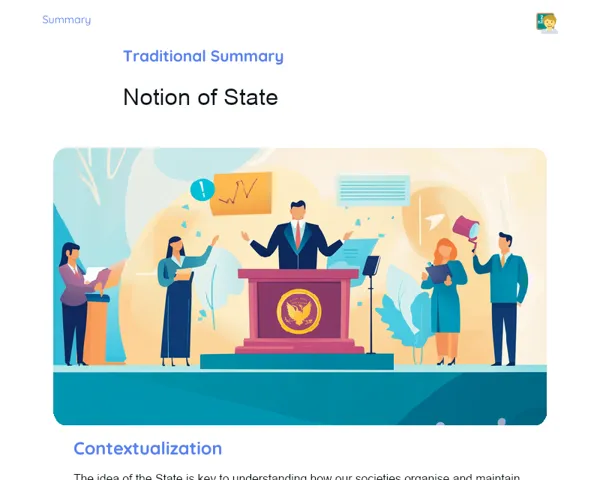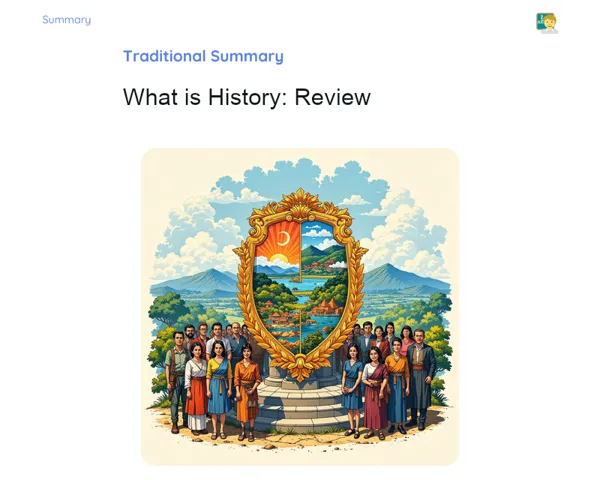Socioemotional Summary Conclusion
Goals
1. Identify the key features of the Early, High, and Late Middle Ages.
2. Investigate the role of the Catholic Church, the feudal system, Arab invasions, and social structures during the Middle Ages.
3. Cultivate self-awareness and self-control by reflecting on your personal emotions and reactions when grappling with complex historical narratives.
Contextualization
Did you know that during medieval times, astonishing Gothic cathedrals were constructed to evoke feelings of awe and reverence? 🌟 These monumental buildings not only mirrored the religious fervour of the period but also showcased remarkable technical and artistic prowess. Let’s delve into how these architectural wonders and other facets of the Middle Ages shaped society and influenced people's emotions during that era!
Exercising Your Knowledge
Late Middle Ages
The Late Middle Ages, covering the 11th to the 15th century, saw a surge in population and urbanisation. This era was marked by thriving trade and the establishment of universities, signifying a transformative period following the hardships of the Early Middle Ages.
-
Population Increase: A notable rise in the European population fuelled the growth of towns and cities.
-
Urban Growth: Cities expanded and gained prominence, evolving into bustling centres of trade and culture.
-
Trade Expansion: The revitalisation of trade enriched medieval society, opening doors to new opportunities.
-
Birth of Universities: Institutions like Bologna and Paris emerged, fostering knowledge exchange and academic communities.
High Middle Ages
Spanning the 5th to the 11th century, the High Middle Ages, or Central Middle Ages, was marked by the establishment of the feudal system, with society structured around vassalage and serfdom, under the significant influence of the Catholic Church.
-
Feudal Order: Society was divided into fiefs, with power dynamics flowing between feudal lords and their vassals.
-
Vassal Relationships: Vassals were granted land in exchange for military service and fealty to their lords.
-
Church Dominance: The Catholic Church wielded immense power over people's spiritual, political, and economic lives.
-
Agricultural Developments: Innovations like the heavy plough and crop rotation boosted agricultural output.
Early Middle Ages
The Early Middle Ages, from the 5th to the 9th century, began after the fall of the Roman Empire and witnessed invasions by various barbarian groups such as the Visigoths and Ostrogoths. This era is often referred to as the 'Dark Ages,' highlighting the perceived lack of cultural and scientific progress.
-
Roman Empire Collapse: The downfall of the Roman Empire triggered significant political and social turmoil.
-
Barbarian Invasions: Groups such as the Visigoths, Ostrogoths, and Vikings invaded and established kingdoms across Europe.
-
Rise of Feudalism: The need for security against invasions led to the emergence of the feudal system.
-
'Dark Ages' Reality: Regardless of its name, this period experienced notable cultural and technological advancements.
Interactions with the Church
The Catholic Church played a pivotal role in medieval life, shaping spiritual, political, and economic spheres. The construction of Gothic cathedrals and the Crusades serve as prime examples of the Church's influence.
-
Spiritual and Political Authority: The Church controlled all aspects of spiritual life and held significant political sway.
-
Gothic Cathedrals: These awe-inspiring structures were built to inspire devotion, reflecting the Church's power.
-
The Crusades: Religious military campaigns aimed at reclaiming the Holy Land, driven by both faith and economic interests.
-
Inquisition: A tribunal set up to counter heresies, highlighting the Church's firm control over matters of belief.
Feudalism
Feudalism functioned as the core social and economic framework during the Middle Ages, founded on land ownership and the dependency between lords and vassals.
-
Land as Power: Ownership of land was the keystone of wealth and influence, dictating social hierarchy.
-
Lord and Vassal Dynamics: Feudal lords allocated lands to vassals in return for military support and various duties.
-
Agrarian Economy: The economy was mainly based on agriculture, with serfs cultivating the lands of their lords.
-
Security and Stability: The feudal system was essential for providing protection during times of conflict and instability.
Arab Invasions
The Arab invasions of the 7th century drastically transformed the political landscape, with the Arabs claiming extensive territories, including parts of Europe like the Iberian Peninsula.
-
Islamic Expansion: Islam disseminated rapidly, impacting cultures and societies beyond Arabia.
-
Conquest of the Iberian Peninsula: The establishment of an Arab caliphate in this region brought remarkable cultural and scientific advancements.
-
Battle of Poitiers: Charles Martel's victory in 732 halted the Muslim advance into Western Europe.
-
Cultural Impact: The blending of Christian and Muslim cultures resulted in rich exchanges and technological progress.
Social Organization
Medieval society was rigidly structured. At the apex were kings and nobility, followed by clergy, knights, and finally peasants and serfs.
-
Societal Hierarchy: A strict structure with various levels of authority and responsibilities.
-
Kings and Nobility: The topmost tier, presiding over land and exercising political power.
-
Clergy: Held substantial spiritual and sometimes political influence.
-
Peasants and Serfs: The foundation of society, tending to their lords' lands in exchange for protection and shelter.
Developed Knowledge
Despite being labelled a 'dark' period, the Middle Ages produced significant advancements in various fields, including Gothic architecture, scholastic philosophy, and agricultural techniques.
-
Gothic Architecture: Known for soaring vaults and intricate stained glass, showcasing the might of the Church.
-
Scholastic Philosophy: A method that blended theology with philosophy, focusing on reconciling faith with reason.
-
Agricultural Innovations: Techniques such as crop rotation and heavy ploughs greatly enhanced agricultural yield.
-
Medieval Universities: Educational hubs where scholars engaged in discussions on theology, law, medicine, and beyond.
Key Terms
-
Feudalism: A political and economic system rooted in land ownership and the relationships between lords and vassals.
-
Crusades: Military campaigns initiated by the Catholic Church to recover the Holy Land.
-
Gothic Architecture: Architectural style marked by tall arches, pointed structures, and elaborate stained glass.
-
Scholasticism: A teaching approach marrying theology with philosophy, striving to align faith and reason.
-
Inquisition: A Church-established tribunal aimed at eradicating heresies and punishing offenders.
-
Caliphate: An Islamic political system led by a caliph, acting as both political and spiritual leader.
For Reflection
-
How did the feudal system shape the emotions and everyday lives of people during the Middle Ages?
-
In what ways did the religious beliefs and practices of the Middle Ages influence the decisions and feelings of the people?
-
How do the advancements and knowledge cultivated during the Middle Ages continue to impact our society and emotions today?
Important Conclusions
-
The Middle Ages is a compelling era that prompted significant changes in Europe, such as the rise of feudalism, the overwhelming influence of the Catholic Church, Arab invasions, and critical technological advancements.
-
Studying this period equips us to understand the foundations of modern European society and how emotions and beliefs have shaped history.
-
Cultivating self-awareness and emotional regulation while studying the Middle Ages will enhance our grasp of the emotional repercussions tied to historical choices.
Impacts on Society
The legacy of the Middle Ages pervades numerous facets of contemporary society. The framework of universities and our current education systems trace back to the inception of medieval universities. Moreover, the grand Gothic cathedrals inspire architects and artists around the globe.
Emotionally speaking, tales of bravery and faith from the Middle Ages, like those surrounding the Crusades or the resistance against barbarian invasions, continue to resonate in modern narratives. These stories can motivate us to confront our own obstacles and draw strength during challenging times, illustrating the enduring influence of history on our emotions and choices today.
Dealing with Emotions
To navigate your emotions while studying the complexities of the Middle Ages, I recommend an exercise rooted in the RULER method. Start by recognising how you feel as you read about historical events like the Crusades or feudalism. Consider the emotions these accounts evoke. Reflect on why you feel this way—could it be the inequity of feudal obligations or the resolve of the crusaders? Accurately identify these emotions: anger, admiration, sadness, and so on. Channel your feelings constructively—whether by journaling, discussing with friends, or expressing your thoughts in art. Finally, find coping strategies to process these emotions, such as meditation, physical activity, or engaging in group discussions.
Study Tips
-
Draft a study plan that incorporates time for personal reflection on the emotional weight of the material.
-
Utilise mind mapping to link historical events with their emotional and societal impacts.
-
Form study groups to discuss intricate themes and exchange various viewpoints on the medieval world, enhancing comprehension and fostering empathy.


